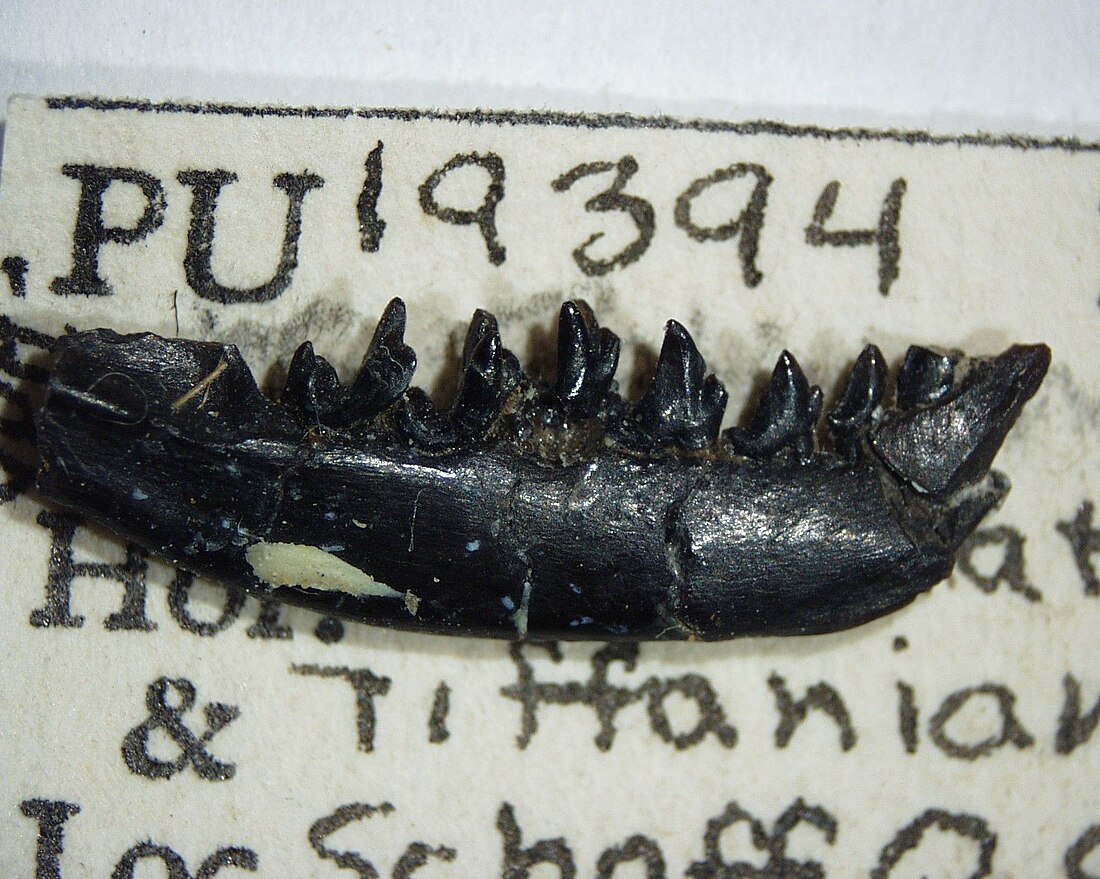Top Qs
Timeline
Chat
Perspective
Palaeoryctidae
Extinct family of mammals From Wikipedia, the free encyclopedia
Remove ads
Palaeoryctidae ("ancient diggers") is an extinct family of non-specialized eutherian mammals from extinct order Palaeoryctida, that lived in North America, Europe, Asia and Africa from the late Cretaceous to the middle Eocene.[4][5][6][7][8]
Remove ads
Description
From a near-complete skull of the genus Palaeoryctes found in New Mexico, it is known that palaeoryctids were small, shrew-like insectivores with an elongated snout similar to that of the leptictids. However, in contrast to the latter, little is known about palaeoryctids' postcranial anatomy (the skeleton without the skull).[9] A 2024 study found shared cranial details between palaeoryctids and leptictids, suggesting a possible close relationship, plesiomorphic retentions, or convergent acquisitions.[10] Where the leptictids were short-lived, the palaeoryctids seem to have been ancestors of Eocene species. While their dental morphology still indicate a mostly insectivorous diet, it, to some extent, also relate to Eocene carnivores such as creodonts.[9]
Remove ads
Taxonomy and phylogeny
Summarize
Perspective
History of phylogeny
The relationship between this archaic group and other insectivorous mammals is uncertain.[11][12] Palaeoryctidae was originally assigned to the now-abandoned grouping Insectivora by Sloan and Van Valen (1965), then to clade Proteutheria,[7] and more recently to Eutheria by Scott et al. (2002).[13]
Generally speaking Palaeoryctidae has been used as a wastebasket taxon for many archaic insectivorous mammals.[14]
According to a 2022 study by Bertrand et al., palaeoryctids are identified to be a basal group of placental mammals.[15]
Taxonomy
|
Remove ads
References
External links
Wikiwand - on
Seamless Wikipedia browsing. On steroids.
Remove ads


